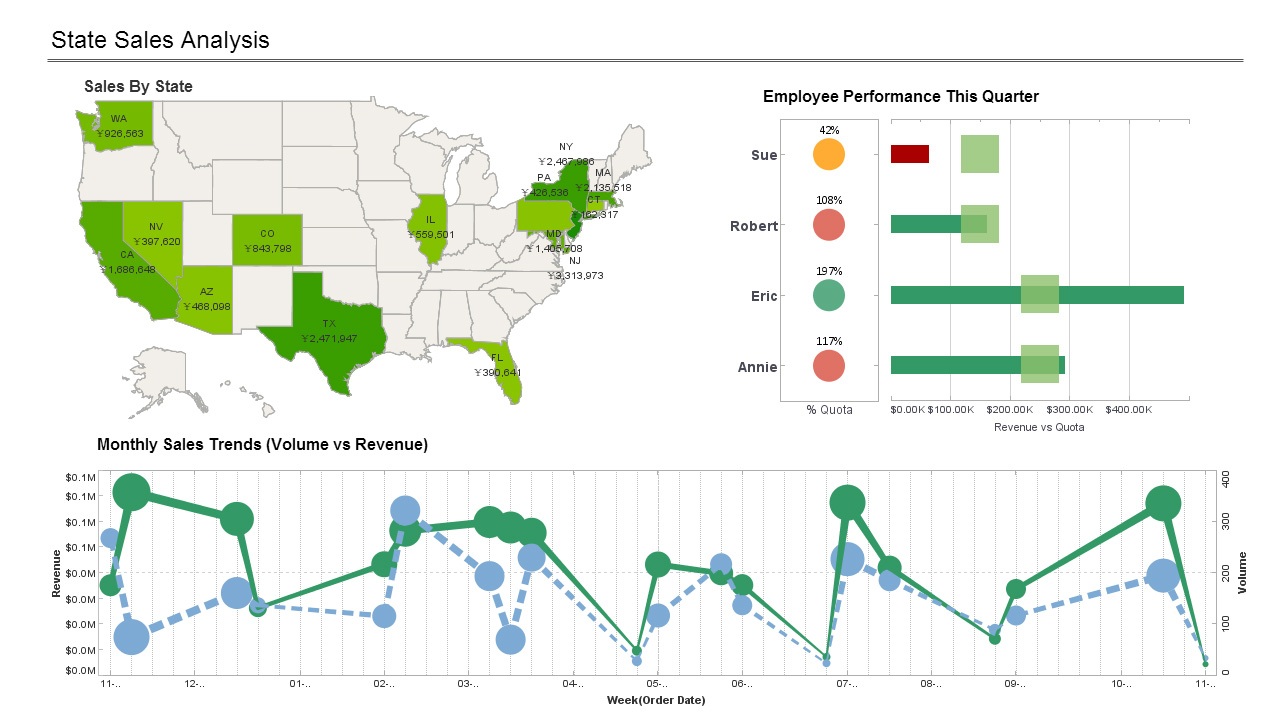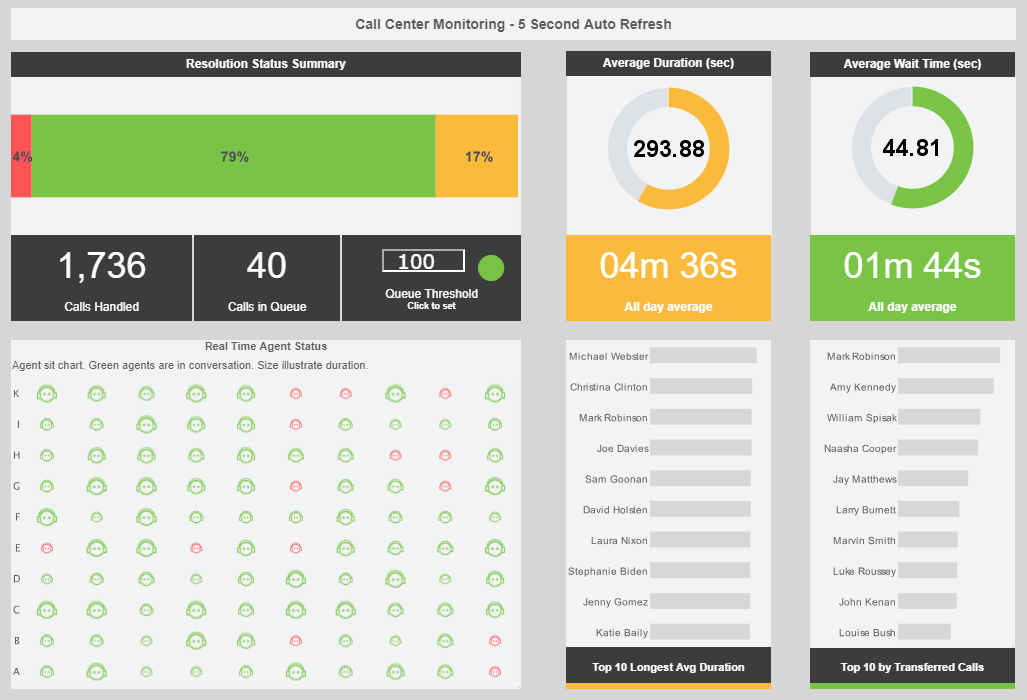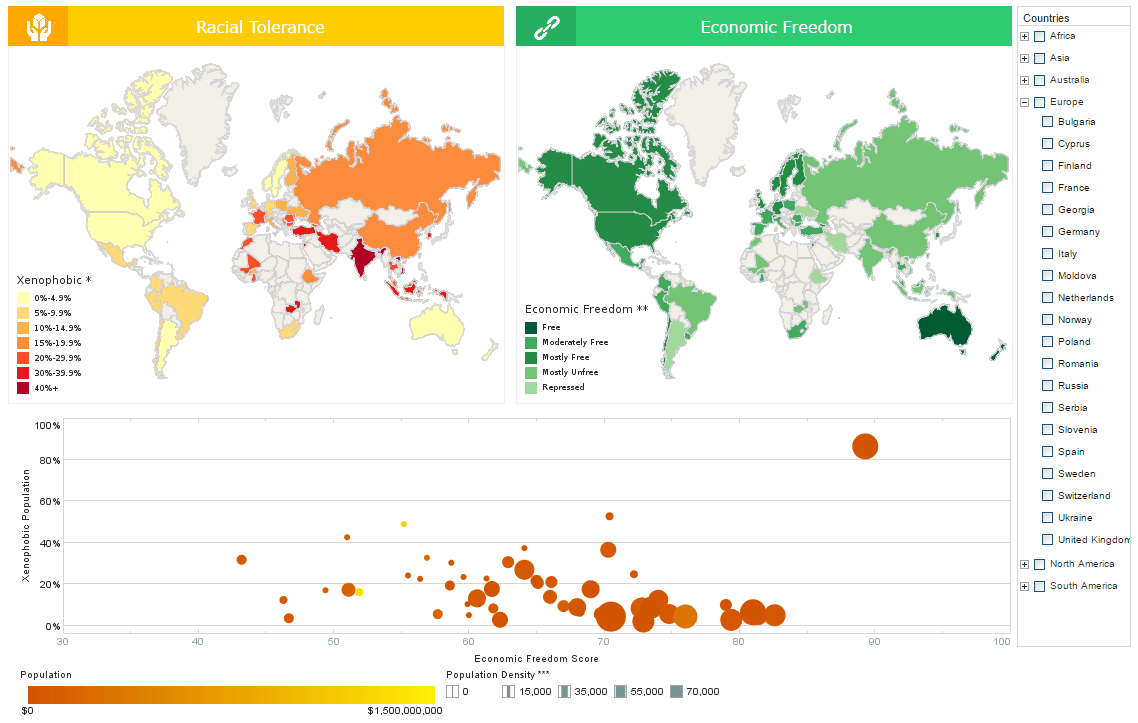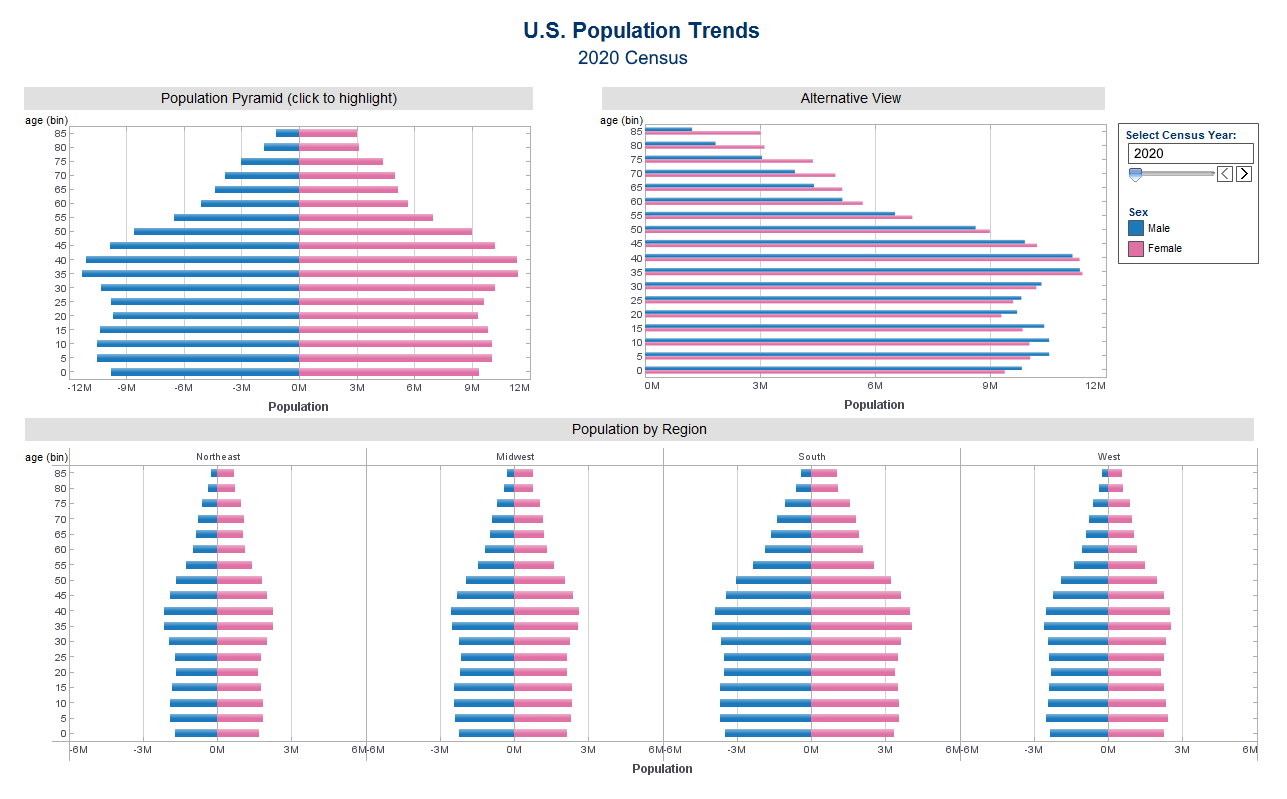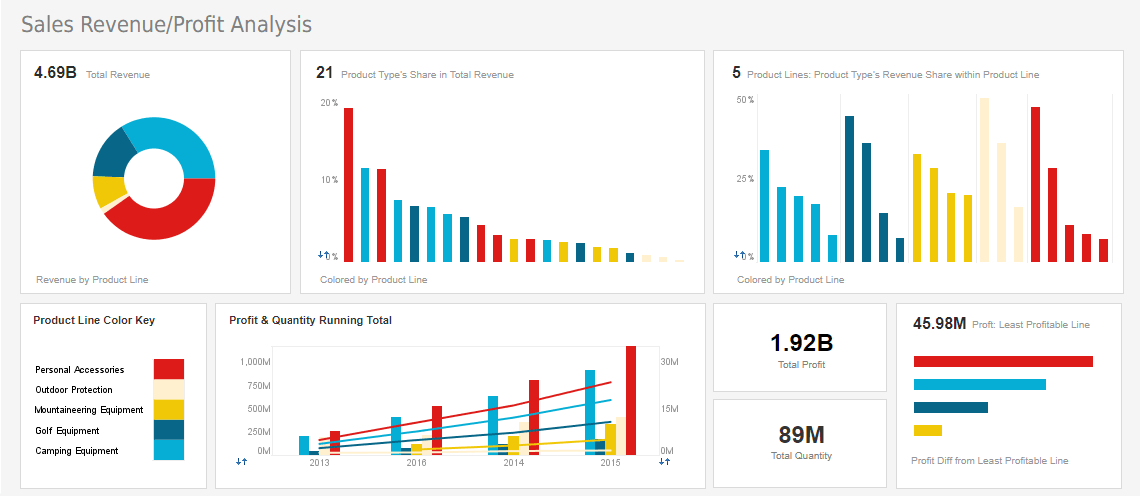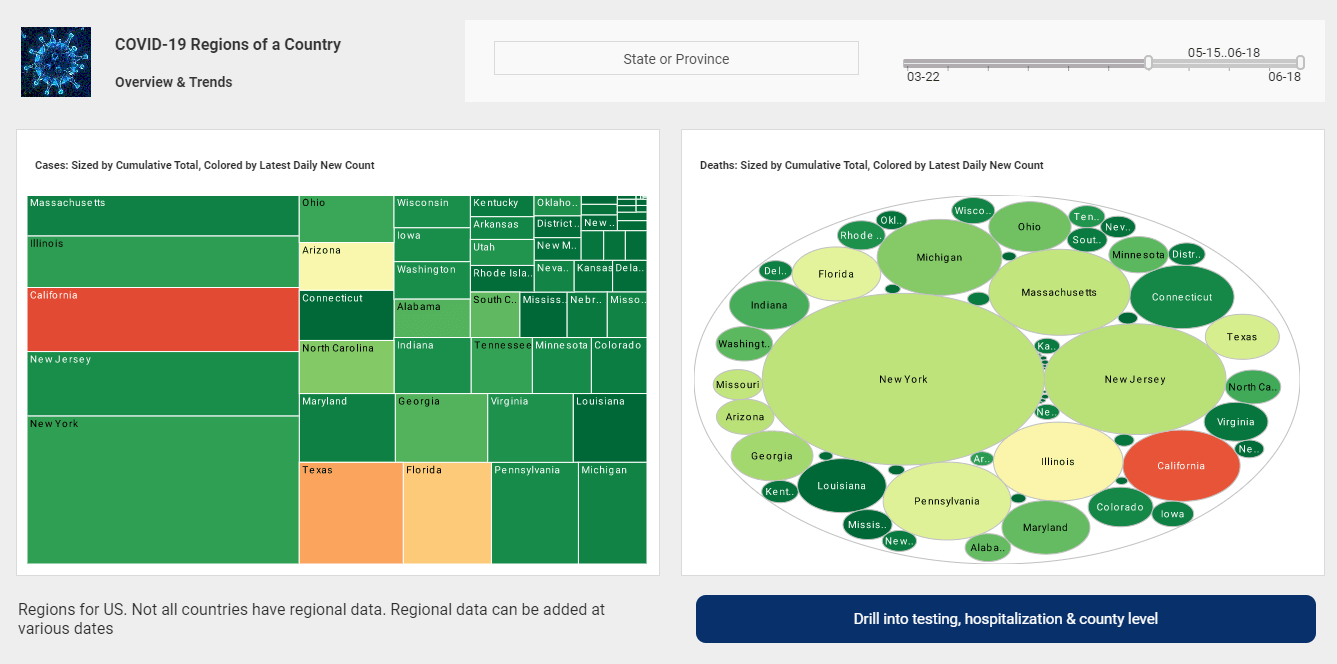Cool KPI Dashboard Software
Since 1996, InetSoft has offered its dashboard software to financial institutions and enterprises alike. InetSoft's StyleBI is a comprehensive platform that will redefine your consolidation, reporting, and performance management functions. It is easy, agile, and robust.
StyleBI™ makes it easy to chart, monitor, and share all of your KPIs from multiple sources in agile dashboard systems. InetSoft's application, StyleBI, is designed to be as easy as possible to deploy and use.
Increase Security and Reduce Errors
InetSoft’s dashboard solution reduces the capacity for human error that occurs frequently with traditional spreadsheet manipulation. Spreadsheets have fatal flaws in that they are prone to human error, lack sufficient security measures, and can be unnecessarily complex and difficult to understand.
StyleBI's software avoids these measures by providing report security while allowing designated users to dissect multidimensional data in an apprehensible visual format. Simply put, data remains in its original unadulterated form, therefore providing organizations assurance that the decisions and actions they take are based on sound information.
Tracking Important Indicators
Key performance indicators define a set of values used to measure against. These indicators are raw sets of values which are fed to systems in charge of summarizing the information. Indicators identifiable as possible candidates for KPIs can be summarized into the following categories:
- Quantitative indicators which can be presented as a number.
- Practical indicators that interface with existing company processes.
- Directional indicators specifying whether an organization is getting better or not.
- Actionable indicators are sufficiently in an organization's control to effect change.
- Financial indicators used in performance measurement and when looking at an operating index.
Data Access and Mashup Technology
InetSoft KPI dashboards are beautiful visual tools that can be integrated into your existing systems with little IT intervention. StyleBI has the following key benefits:
- Real-time data mashup Data Block™ architecture
- Professional atomic data block modeling tool
- Web based data mashup accessible by end users
- Easy connectivity to relational databases (JDBC), multidimensional databases, XML, SOAP, Java beans (POJO), Microsoft Excel, flat files, OLAP cubes, SAP, PeopleSoft, JD Edwards, and Siebel CRM
- Security control at the data cell level for users, roles and groups
- Agile mashup across multiple domains and multiple data sources
- High performance scalability for large data sets, and large volumes of users
- Web based mobile dashboards accessible from devices including iPhones,smartphones, Apple based & Android-based tablets
- Use standard web browsers with or without a Flash plugin - e.g., Chrome, Internet Explorer, Firefox, Safari
Enjoy These Dashboard Features
Industrial Enzyme Fungi Cultivator Upgrades to InetSoft KPI Dashboarding
The global biotechnology industry is diverse, but few niches are as specialized as industrial enzyme fungi cultivation. These companies grow fungal strains under controlled conditions, extracting enzymes that power everything from laundry detergents to pharmaceutical formulations. For one such cultivator, data was both its greatest asset and most persistent headache. With dozens of variables influencing fungal growth—substrate composition, pH levels, humidity, temperature, nutrient feed, and genetic stability—decision-makers required precision analytics to optimize operations. Unfortunately, the firm’s reliance on Atlassian for project tracking and light-weight reporting had become a limiting factor.
Over time, Atlassian’s suite, while strong in task management, proved inadequate for the deep KPI analytics the cultivator required. Spreadsheets and static reports filled the gaps, but they introduced latency, inconsistency, and user frustration. After a year-long evaluation, the company replaced its Atlassian-based reporting workflows with InetSoft’s KPI dashboarding solution. The transition delivered significant improvements in licensing efficiency, resource allocation, operational overhead, support costs, and most importantly, management and end-user satisfaction.
The Limitations of Atlassian for KPI Tracking
Initially, Atlassian tools such as Jira and Confluence provided structure for R&D project management. However, as the cultivator scaled, operations demanded more granular and real-time KPIs than Atlassian could deliver. Metrics such as enzyme yield per substrate batch, humidity deviation rates, and cycle time efficiencies required cross-system data blending. Atlassian plugins offered limited dashboarding capabilities, but they remained tethered to static, project-centric workflows rather than dynamic business intelligence.
The company’s IT team found themselves building workarounds. Jira tickets were tagged with production variables, Confluence hosted ad hoc reports, and CSV exports were used for manual consolidation. This patchwork consumed analyst resources and delayed critical insights. For example, identifying which fungal strain was underperforming required data pulls from lab information systems, ERP modules, and ticket histories. By the time results were collated, batch cycles had already moved forward, losing the chance for real-time intervention.
Choosing InetSoft for KPI Dashboards
When the decision was made to pursue a dedicated analytics solution, the selection committee evaluated mainstream BI vendors alongside smaller players. InetSoft’s KPI dashboard solution stood out for three core reasons:
- Native KPI Framework: InetSoft emphasized KPI-centric dashboards, enabling the cultivator to design metrics directly tied to operational and financial outcomes without extensive customization.
- Data Integration Strength: The solution could mash up ERP, SCADA, lab information systems, and CRM data seamlessly, eliminating the reliance on static exports and manual joins.
- Cost Alignment: InetSoft offered a more favorable licensing structure for a midsized biotech company, with options that scaled usage rather than charging flat enterprise-wide fees.
The IT team was also impressed by InetSoft’s governance and role-based access controls, critical for a company dealing with sensitive intellectual property and regulatory scrutiny. With scientists, plant engineers, and finance managers all needing tailored access, the ability to provision dashboards by role sealed the decision.
Implementation and Transition
The transition from Atlassian-centric reporting to InetSoft KPI dashboards occurred over nine months. In the first phase, IT prioritized connecting the core data repositories: ERP for procurement and production planning, SCADA for environmental controls, and the laboratory information system for yield analysis. Once integrated, InetSoft’s mashup capabilities allowed analysts to create unified KPI datasets without custom coding.
Next came dashboard development. The production team received real-time dashboards showing batch yields, contamination alerts, and energy usage. Finance obtained profitability dashboards blending enzyme output with market pricing trends. Compliance gained automated dashboards with audit-ready metrics, including deviation logs and batch traceability. These dashboards replaced Atlassian-based trackers and eliminated the manual reporting pipeline.
Finally, end-users underwent training. Rather than pulling data from Jira or Confluence, they now interacted with intuitive dashboards designed for their role. Scientists could compare enzyme yields across different fungal strains, while executives could monitor key profitability ratios in real time. Adoption was rapid, as the system aligned with daily workflows instead of forcing awkward workarounds.
Licensing and Cost Savings
Licensing costs were a decisive factor in the switch. Atlassian’s per-user licensing escalated quickly as the company expanded, especially since licenses were required for even occasional report viewers. By contrast, InetSoft’s licensing aligned with usage tiers, allowing the cultivator to scale dashboards and viewers without incurring exponential costs. IT estimated that annual licensing expenses dropped by 35% after the migration.
Additionally, by consolidating KPI reporting within InetSoft, the company avoided the need for multiple third-party Atlassian plugins. These add-ons had been necessary to extend Atlassian’s reporting capabilities, but each carried its own maintenance cost. InetSoft rendered them obsolete, producing further savings and streamlining vendor management.
Resource and Overhead Efficiency
The shift also transformed resource allocation. Under Atlassian, analysts dedicated an estimated 60% of their time to manual data exports, cleaning, and report generation. With InetSoft dashboards in place, those processes became automated. Analysts could redirect efforts toward predictive modeling and advanced scenario analysis, directly supporting strategic initiatives.
From an infrastructure perspective, InetSoft’s lightweight deployment reduced overhead. Atlassian plugins and custom scripts required ongoing updates and troubleshooting, which consumed IT cycles. By standardizing on InetSoft, the IT team reported a 40% reduction in hours spent on maintenance and a sharper focus on innovation projects, such as integrating IoT sensors for real-time monitoring of fungal growth chambers.
Support and Maintenance Gains
Support requirements also changed dramatically. With Atlassian, IT had to juggle multiple support contracts—one for Atlassian itself, and several others for plugins. Troubleshooting involved multiple vendors and slow turnaround times. With InetSoft, support was centralized. The cultivator had one point of contact for analytics-related issues, reducing the average ticket resolution time by 50%.
Maintenance tasks simplified as well. InetSoft’s upgrade process was straightforward, requiring fewer test cycles than Atlassian plugin updates. The IT manager reported that quarterly maintenance windows shrank from two days of preparation and downtime to a matter of hours.
Management and End-User Satisfaction
Management feedback was overwhelmingly positive. Executives appreciated consolidated KPI dashboards that presented a real-time snapshot of operational health. Instead of poring over Jira reports or waiting for analyst-generated spreadsheets, leadership could monitor yield efficiency, cost structures, and compliance performance on a single screen.
End-users echoed this sentiment. Scientists valued the ability to drill into batch-level data, identify anomalies, and experiment with different conditions without waiting for IT. Operations staff found the real-time production dashboards reduced downtime, as they could catch environmental deviations early. Finance reported greater accuracy in profitability forecasts, improving contract negotiations with enzyme buyers. Compliance staff praised the audit-ready reports, which replaced manual evidence gathering with automated traceability.
Overarching Benefits
Summarizing the transition, the cultivator identified several major benefits:
- Cost Reductions: 35% savings in licensing costs, plus elimination of plugin expenses.
- Resource Reallocation: Analysts reclaimed 60% of their time for higher-value work.
- Reduced Overhead: 40% fewer IT hours devoted to maintaining reporting infrastructure.
- Faster Support: 50% quicker issue resolution thanks to centralized support.
- End-User Empowerment: Self-service dashboards boosted satisfaction and adoption.
Future Roadmap
Looking ahead, the company plans to leverage InetSoft for predictive analytics. By feeding historical KPI data into machine learning models, they hope to forecast fungal yield variations and optimize substrate mixes proactively. Integration with external commodity market data will allow finance teams to model profitability scenarios under fluctuating input costs. The IT department is also exploring API-driven dashboards for customers, offering transparency into production schedules and delivery timelines, which could further strengthen long-term partnerships.
